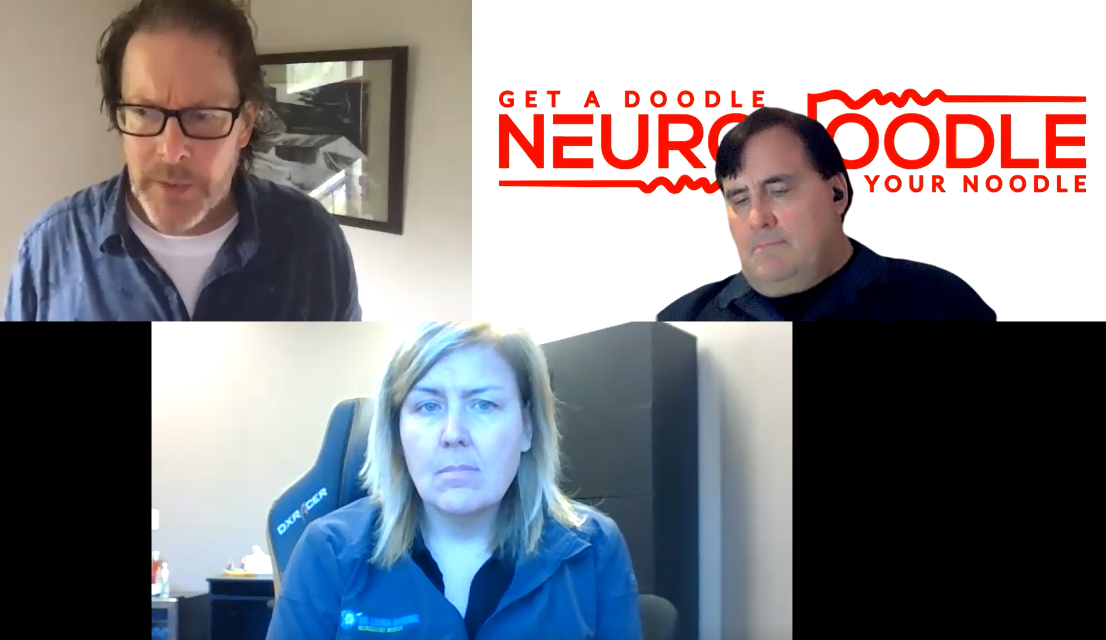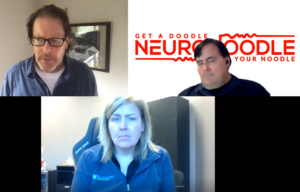Neuropsychologists Dr. Laura Jansons and Dr. Skip Hrin discuss Autism. using an EEG to detect as well as Neurofeedback to treat In this episode we are joined by special guests Dr. Nicole Quintero and Crystal Ciszek from Key Autism Services.
Dr. Skip Article
Blood test predicts risk of mild memory loss developing into Alzheimer’s
Blood tests are starting to show real potential as a way of detecting Alzheimer’s disease in its early stages, with a number of studies producing highly promising results in the past couple of years. Joining them is a new test that can analyze markers in the blood of those with mild memory loss to determine the risk of them going on to develop Alzheimer’s within two to four years.
Listener article sent in to us thanks Zach !!
Want to Predict Which Videos Will Go Viral? Scan Your Brainwaves.
Our brains can predict the popularity of online videos, without us even knowing it.
“In many of our lives, every day, there is often a gap between what we actually do and what we intend to do,” said Knutson, who is a professor of psychology at the Stanford School of Humanities and Sciences, reflecting on his smartphone habits. “We want to understand how and why people’s choices lead to unintended consequences — like wasting money or even time — and also whether processes that generate individual choice can tell us something about choices made by large groups of people.”
Toward that end, Knutson and Stanford GSB professor Baba Shiv have joined other colleagues to investigate an approach he calls “neuroforecasting,” in which they use brain data from individuals who are in the process of making decisions to forecast how larger groups of unrelated people will respond to the same choices. A paper about their work, which recently appeared in the journal Proceedings of the National Academy of Sciences, focuses on how people spend time watching videos online.
By scanning people’s brains as they selected and watched videos, the researchers discovered that both neural and behavioral responses to a video could forecast how long other people will watch that same video on the internet. When forecasting video popularity on the internet, however, brain responses were the only measure that mattered.
“Here, we have a case where there is information contained in subjects’ brain activity that allows us to forecast the behavior of other, unrelated, people — but it’s not necessarily reflected in their self-reports or behavior,” explains Lester Tong, a graduate student in Knutson’s lab. “One of the key takeaways here is that brain activity matters and can even reveal hidden information.”
Cerebral Secrets
The researchers analyzed data from 36 participants who watched videos while being scanned with a brain-imaging technique known as fMRI. The researchers also monitored participants’ behavior — such as whether they chose to skip a video — and asked them questions about each video, including how it made them feel and whether they thought it would be popular. Then they examined how those same videos performed on the internet in terms of daily views and average duration of viewings.
Because videos are complex and change over time, the researchers specifically examined brain responses to the start and end of videos. They focused on activity in brain regions previously shown to predict peoples’ willingness to spend money.
The researchers found that longer video views were associated with activity in reward-sensitive regions of the brain, while shorter video views were associated with activity in regions sensitive to arousal or punishment. The subjects’ answers to questions about the videos also predicted their own behavior.
In many of our lives, every day, there is often a gap between what we actually do and what we intend to do.
Brian Knutson
When it came to forecasting the behavior of others online, however, the data told a different story. Both the group’s behavior and brain activity forecasted how long people would watch the videos online. However, only group brain activity forecasted the popularity (or views per day) of each video online. During just the first four seconds of watching each video, more activity in the brain region associated with anticipating reward forecasted a video’s popularity online, whereas heightened activity in the region associated with anticipating punishment forecasted decreased popularity.
“If we examine our subjects’ choices to watch the video or even their reported responses to the videos, they don’t tell us about the general response online,” says Knutson, who co-leads the NeuroChoice Initiative of the Stanford Wu Tsai Neurosciences Institute. “Only brain activity seems to forecast a video’s popularity on the internet.”
This and related research indicate that some steps of the choice process may prove more useful for broad neuroforecasting than others. By teasing out the specifics of which steps matter, the researchers think neuroforecasting might even apply across groups of different ages, genders, races or cultures when they show similar early neural responses.
Valuable Choices
These findings suggest similarities between neuroforecasting how people spend time — and money — online, which the team has previously studied in non-traditional markets, including online markets for micro-loans and crowdfunding.
Knutson and his NeuroChoice colleagues have also been investigating neural mechanisms of choice in the context of drug addiction. In the future, they aim to continue exploring when brain data can complement behavioral data, and in which situations.
Whether the topic is giving money or spending time, the researchers hope that a better understanding of how the brain promotes choice will eventually help people eventually align what they actually do with what they want to do.
The research was funded by the NeuroChoice Initiative of Stanford’s Wu Tsai Neurosciences Institute.







